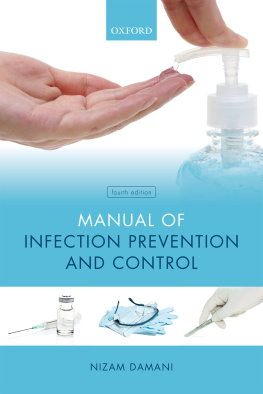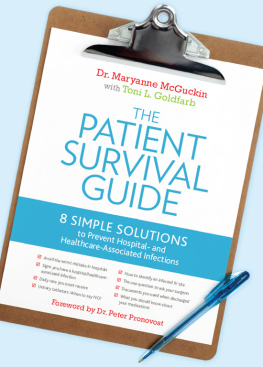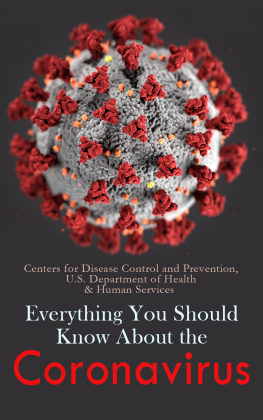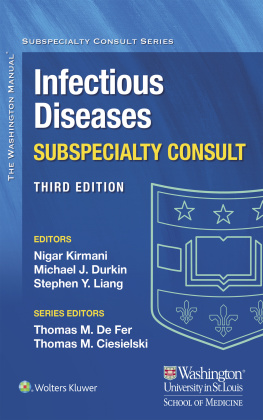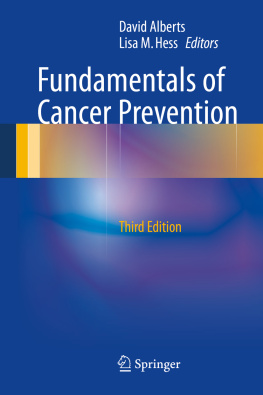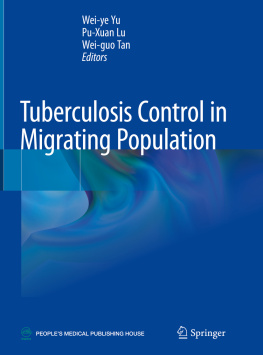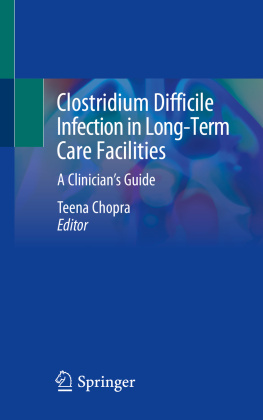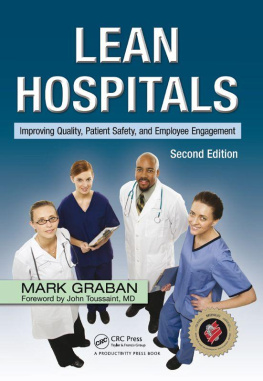Manual of Infection Prevention and Control

Great Clarendon Street, Oxford, OX2 6DP, United Kingdom
Oxford University Press is a department of the University of Oxford.
It furthers the Universitys objective of excellence in research, scholarship, and education by publishing worldwide. Oxford is a registered trade mark of Oxford University Press in the UK and in certain other countries
Oxford University Press 2019
The moral rights of the author have been asserted
First Edition Published in 1997
Second Edition Published in 2003
Third Edition Published in 2012
Fourth Edition Published in 2019
Impression: 1
All rights reserved. No part of this publication may be reproduced, stored in a retrieval system, or transmitted, in any form or by any means, without the prior permission in writing of Oxford University Press, or as expressly permitted by law, by licence or under terms agreed with the appropriate reprographics rights organization. Enquiries concerning reproduction outside the scope of the above should be sent to the Rights Department, Oxford University Press, at the address above
You must not circulate this work in any other form and you must impose this same condition on any acquirer
Published in the United States of America by Oxford University Press
198 Madison Avenue, New York, NY 10016, United States of America
British Library Cataloguing in Publication Data
Data available
Library of Congress Control Number: 2019930899
ISBN 9780198815938
eISBN 9780192547958
Oxford University Press makes no representation, express or implied, that the drug dosages in this book are correct. Readers must therefore always check the product information and clinical procedures with the most up-to-date published product information and data sheets provided by the manufacturers and the most recent codes of conduct and safety regulations. The authors and the publishers do not accept responsibility or legal liability for any errors in the text or for the misuse or misapplication of material in this work. Except where otherwise stated, drug dosages and recommendations are for the non-pregnant adult who is not breast-feeding
Links to third party websites are provided by Oxford in good faith and for information only. Oxford disclaims any responsibility for the materials contained in any third party website referenced in this work.
To my wife Laila, and my children Numair and Namiz
And to my mother Gulbano and my late father Noordin
Foreword
Recent high profile and tragically high-mortality infectious disease outbreaksEbola in Central and West Africa, Severe Acute Respiratory Syndrome (SARS) in Asia and North America, and Middle East Respiratory Syndrome Coronavirus (MERS-CoV) in Asia and the Middle Easthave all been caused by the transmission of the causative agent in healthcare facilities and in communities. Cross-infection occurs when unsuspecting individuals, including healthcare workers (HCWs), become infected during the course of their work. Typically, an individual become infected because the initial signs and symptoms of the emerging infection causing the outbreak resemble those of other known infections. Fever and myalgia, for example, resemble a host of other infections ranging from a simple common cold to malaria and pneumonia.
Infected patients and HCWs unwittingly transmit infection to other patients, family members, and close personal contacts, with onward transmission in the community. Transmission in healthcare facilities mainly occurs due to failure to apply basic standard infection prevention and control (IPC) precautions such as hand hygiene, failure to properly don and remove personal protective equipment, inadequate cleaning, disinfection or sterilization of reusable items and equipment, and lack of effective cleaning of the healthcare environment.
In addition, there are also silent transmission events, caused both by asymptomatic patients and occasionally by HCWs who are carriers of other infectious agents or are colonized by multidrug-resistant microorganisms (MDROs). Infections caused by MDROs may result in treatment failure and death among patients hospitalized in locations ranging from the neonatal unit to the surgical ward, and among patients who attend outpatient clinics in healthcare facilities. The World Health Organization (WHO) estimates that over 1.4 million patients worldwide acquire infections in healthcare facilities.
Healthcare-associated infections (HAIs) affect all countries, irrespective of their level of development. The US Centers for Disease Prevention and Control, for example, estimated that between 1.7 and 2 million patients were infected in healthcare settings during 2009, and that nearly 90,000 of them died. The European Centre for Disease Prevention and Control estimated in 2013 that, on any given day, about 80,000 patients in the European Community had at least one HAI, and that a minimum, of 37,000 had died. In the recent West African outbreak of Ebola approximately 900 of the 28,500 persons infected with the Ebola virus were HCWs representing approximately 5% of all Ebola deaths, and during the SARS outbreak in 2003 it was estimated that just under 50% of all those infected were HCWs who then unknowingly spread infection to other patients, individuals in the community, and their families.
The overall direct medical costs of HAIs in the US are estimated to be $2845 billion per year. Also significant are the indirect costs associated with workplace absence and loss of life. Outbreaks also impact on economies. The GDP of three West African nationsGuinea, Liberia, and Sierra Leonewas estimated to have decreased by 24% during the period when the outbreak occurred. Additional costs in life lost occurred when healthcare facilities collapsed or were avoided by patients with other infections when it was estimated that there were 10,000 excess deaths due to malaria alone. When particular healthcare facilities in industrialized countries have adverse publicity because of HAIs, patients may likewise be dissuaded from attending because of loss of confidence by those patients in delivery of their medical care.
Prevention and control of HAIs are clearly a major priority for all countries. The Manual of Infection Prevention and Control outlines the basic concepts of infection prevention and control (IPC) in healthcare facilities worldwide. It also provides practical guidance, with clear illustrations, on activities such as triage and isolation of patients with new and emerging infections, as well as those acquired on a day-to-day basis. It likewise provides step-by-step guidance on IPC measures such as effective hand hygiene and donning and removing personal protective equipment, safe injection practices, and control of MDROs. Other practical guidance in the manual includes design of healthcare buildings to prevent transmission of infection to and from patients and from dead bodies, and decontamination of reusable medical items and equipment. Specific guidance on the prevention and control of common HAIs are also provided for patients who are on ventilators, patients undergoing surgical procedures, and patients who have indwelling medical devices, e.g. intravascular and urinary catheters. One of the major strengths of the manual is to list IPC practices which either have no or low cost to implement, and practices which are not only ritualistic and wasteful but also unsafe based on current published evidence. And finally, the manual provides practical advice on antibiotic stewardship as a means of slowing the evolution of antimicrobial resistance, a priority in healthcare settings throughout the world.

